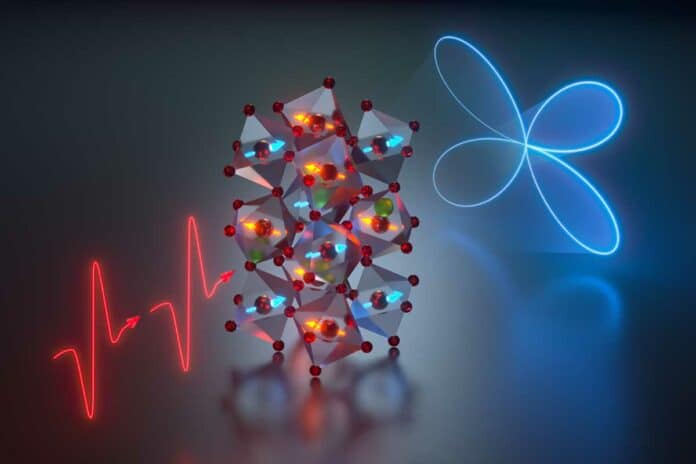Using light to excite and control lattice vibrations has proven to be an effective way to alter the behavior of quantum materials when they are not in equilibrium. Expanding this approach beyond interactions among coherent phonons to include nonlinear couplings among other collective modes could offer new possibilities for manipulating the dynamic properties of solids.
For instance, magnetic materials have collective excitations known as magnons, which can carry information with minimal energy loss. Controlling these magnons coherently and nonlinearly makes it possible to create a promising method for information processing and storage based on collective modes. This could be particularly useful in emerging fields like spintronics and magnonics.
In a study, researchers from MIT and the University of Texas at Austin demonstrate the ability to control the dancing patterns of tiny magnetic bits, often referred to as “spin waves” or “magnons,” nonlinearly, akin to how skilled guitar players manipulate guitar strings.
The researchers employed powerful terahertz (THz) fields generated by specially designed laser pulses operating at extreme infrared frequencies to initiate a spin wave at its typical frequency. However, instead of only stimulating one spin wave, as typically anticipated, they also induced another spin wave with a higher frequency.
MIT graduate student Zhuquan Zhang said, “This really surprised us. It meant we could nonlinearly control the energy flow within these magnetic systems.”
The researchers created an advanced tool to discover how different spin waves interacted and what patterns they followed. “THz light is hard to see with the naked eye, unlike visible light,” Gao explains. “But with our new technique, we can measure THz signals using just one light pulse, which was crucial for these experiments.”
Their study shows how light can affect spins in a unique way. Because these tiny magnetic bits and their movements use less energy than electric charges, scientists are excited about their potential for changing how computers work. This discovery gives us a tool to move closer to a future where we use spins for fast information processing. It could lead to things like magnonic transistors and quantum computing devices.
Journal Reference:
- Zhang, Z., Gao, F.Y., Chien, YC. et al. Terahertz-field-driven magnon upconversion in an antiferromagnet. Nat. Phys. (2024). DOI: 10.1038/s41567-023-02350-7
